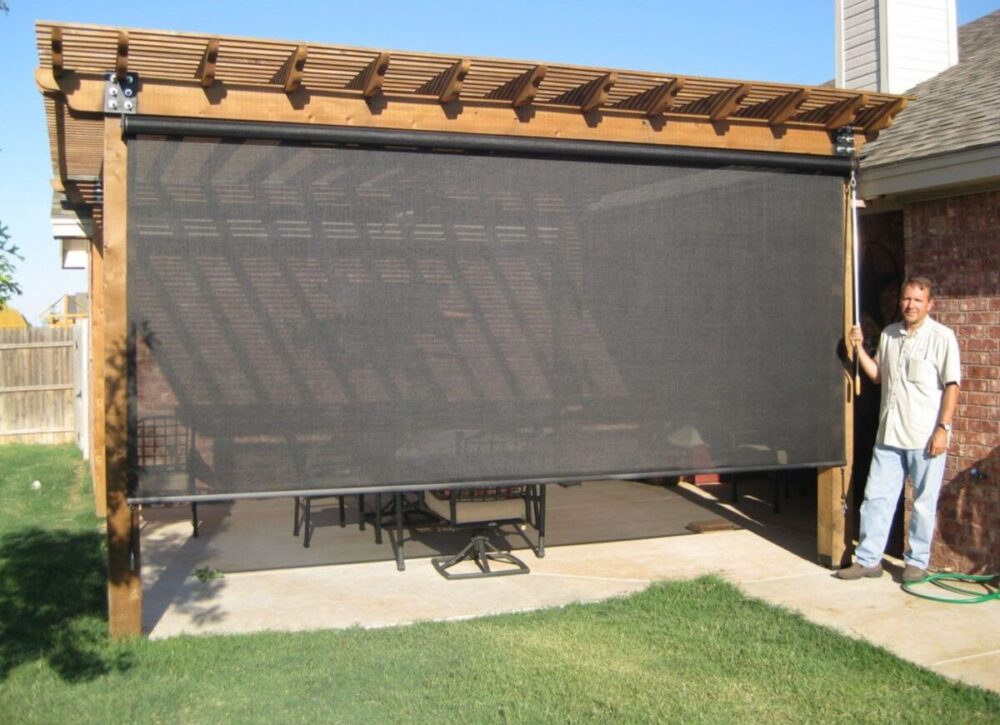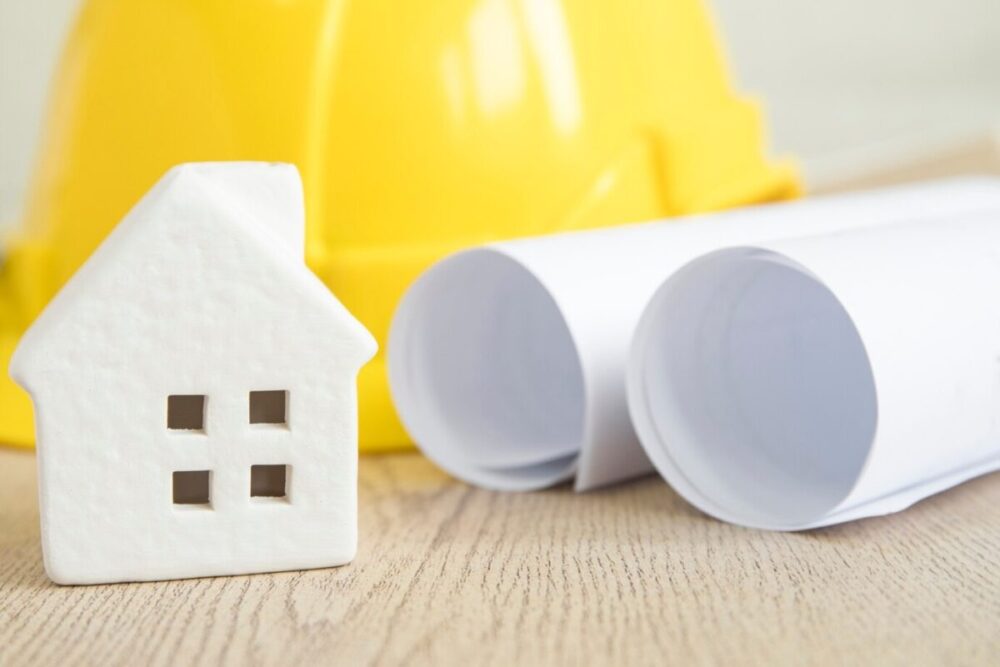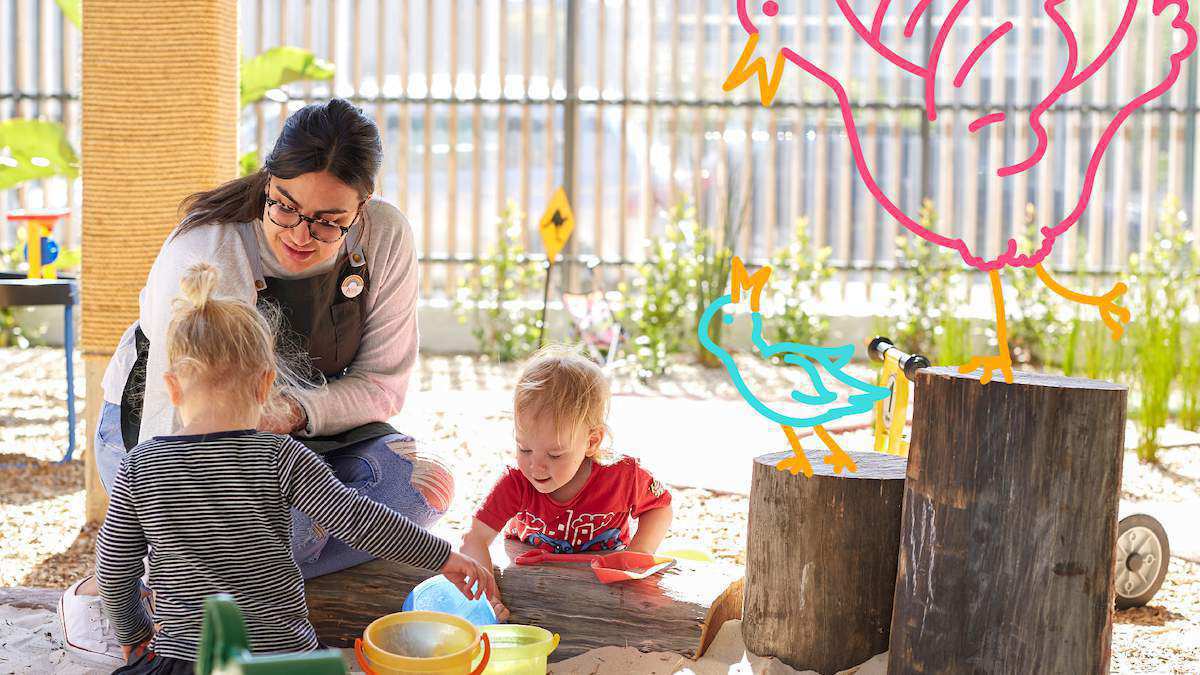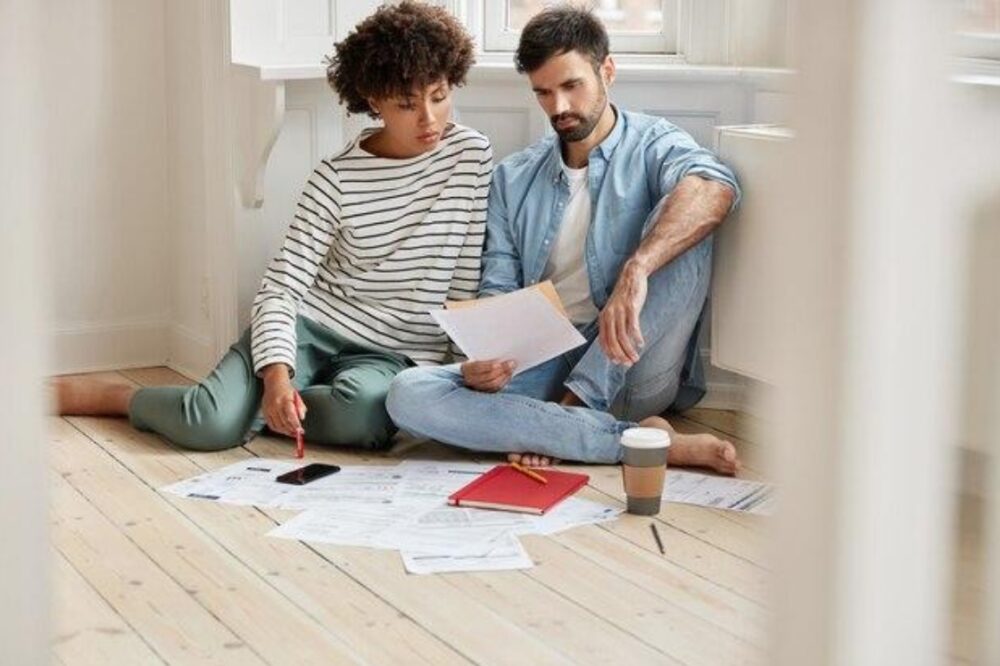Owning a home comes with a great deal of responsibility that can often get overwhelming. Tending to every different aspect of your property can get tedious and challenging especially if you generally care about every little detail. Of course, most people want their homes as comfortable, beautiful, and warm as they can be. In order to do that, however, you have to pick and choose what you equip it with and how you combine multiple features and elements of the home together.
Caring for the surroundings is all well and good, but it is the actual practicality of the home itself that most homeowners care about the most. The people living inside have to use actually know and feel first hand what their house does for them and use the features during their everyday life.
An often-overlooked element that every house needs are window elements that allow light in or keep it out, or put simply in one word, shading. Shading comes in a variety of different forms and sizes. Nowadays, it is not exclusively used for windows and doors either but for a whole range of other useful things for other parts of the house and the yard.
In this article, we will give you tips regarding the right kind of shade screen for your patio. Most modern houses opt for a larger patio since it is so useful and neat to have one. Numerous family-friendly activities benefit from one, so why not install some shade screens to protect yourself and the ones you love from the elements and bad weather? Read on to find out more, and to order the best retractable screens for your home in Central Florida, make sure to visit this site.
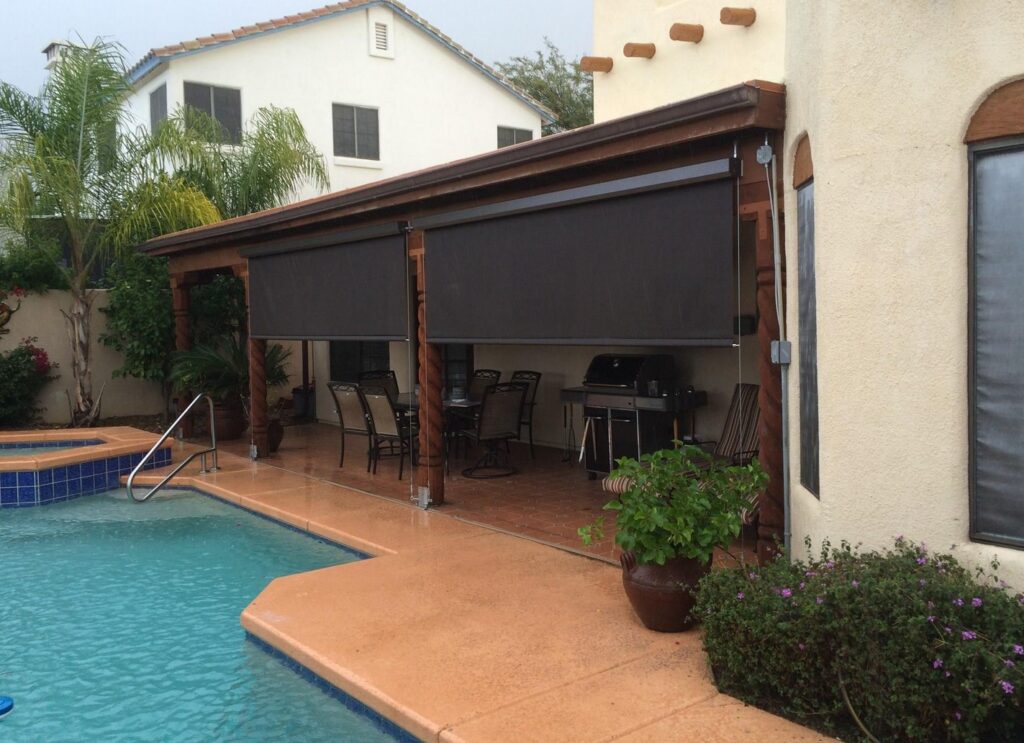
1. Amount of Light
Shades are almost always installed to prevent the sun from giving out too much light to the patio or any other area that is to be behind the new screen. You have to think long and hard about the amount of light you want to let into your patio before you install the screen. The last thing you want is to have it be too dark once you lower the shades. This of course depends largely on the position of your home according to the sun and its yearly movements. If you have too much light between the end of spring and the start of fall, you probably need some shading. Once you start browsing different materials, you can pick those that block most of the light or see-through ones with little holes that allow more.
2. Motorized or Manual
Manual shades are slowly being pushed out and exchanged with technologically more advanced motorized, retractable screens. These substitute the need for manual pulling and releasing with a simple touch of a button. They are more aesthetically pleasing since there are no visible ropes. All it takes is a remote control or a wall-mounted button, futuristic, simple, and engaging. The lift that allows them to move up and down is easy to install and should not be too hard on your walls and beams. The best of all have sun sensors that allow the shades to move automatically depending on what setting you use. The most obvious choice for a neat looking patio are retractable motorized screens, but for a rustic home in the country, a manual one may suit the overall appeal better.
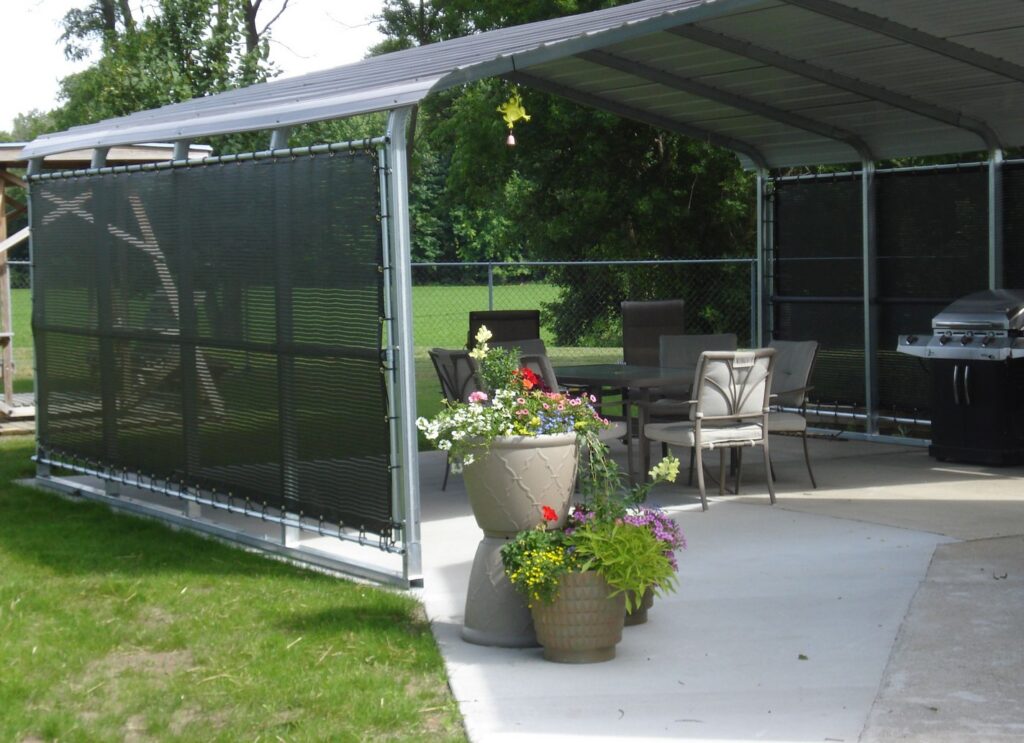
3. Décor and Color
Since houses and patios come in all sorts of color schemes and combinations, there should be a lot of thought put into the final decision about shade screens. Once they are lowered, they will some of the most notable elements of your home and everyone will be able to see them from the street. Similarly, if the patio is in the back yard, you will want a decoration and color that suits the rest of your house and yard well. Remember that white shades or warm colors make everything a bit brighter, which can do wonders when you lower them. You will effectively be blocking away the sun but still allowing a lot of light thanks to the shade screen color. If most of your house is darker, especially the outside elements like the fence, the gate, the patio itself, or the furniture, opt for a grey, dark, or brown option.
4. Material and Quality
Since they will be protecting the outside of your home and the general area surround the entrance and the patio, you will want the shades to be made of strong, durable, waterproof material. If possible, pick the one that deals with sunrays well because you do not want it to become pale over time. Alternatively, the screen has to be just the right amount of heavy and elastic so as not to be moved too much when it is windy outside. What use is there from a light screen that offers no real protection except an occasional shade? Since these are multipurpose products, make use of as much of their features as possible and maximize your investment.
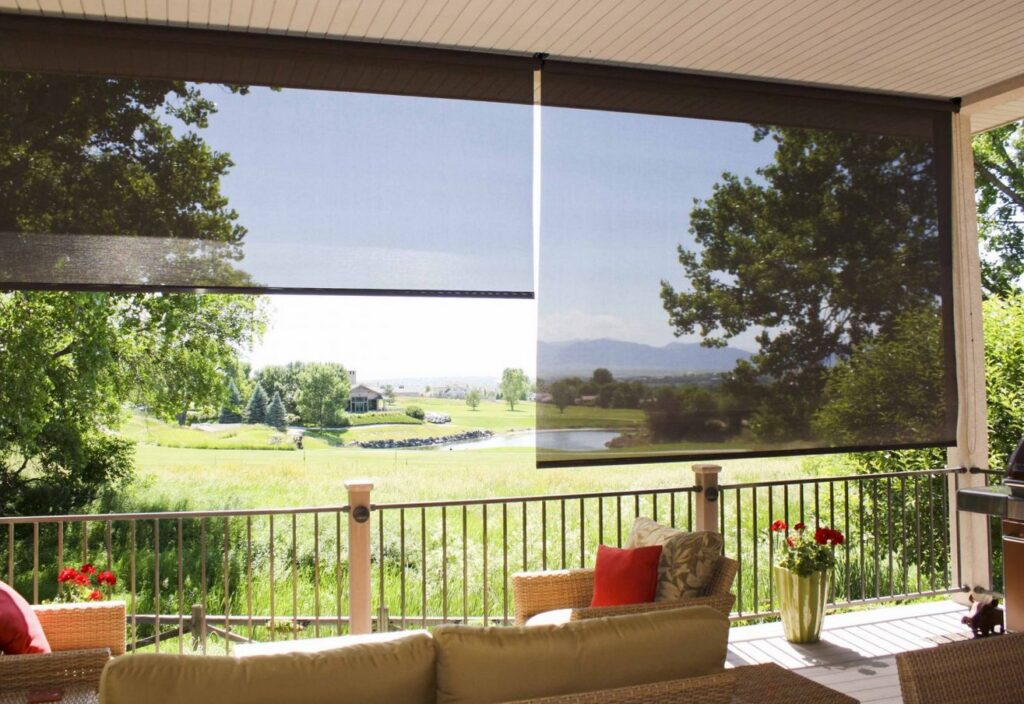
5. A Zipper can go a Long Way
If you want extra protection and a guarantee that nothing will get in, not the light, the rain, nor a bit of wind, you should consider adding a zipper track to the lower end of your shade. A zipper will also prevent any and all insects from creeping under the shades, which are often easy to pass for more insects. This is especially important if you decide to get a manual shade screen, as the motorized ones offer better protection on the sides thanks to the rails. The zipper track can also block out the extra heat on hot summer days, or prevent some heat or even noise from escaping if you want to isolate yourself from the rest of the neighborhood.
6. Eliminate Walls
If you think about it, a set of quality screens can completely eliminate the need for any walls on your patio. You probably have a few support wooden beams that are necessary to keep your house in place. If you simply add tall and wide enough shade screens between them, you will have closed off the whole area simply and efficiently. No need for extra glass, wood, or other material that would act as a sort of walling. Shades are enough both for summer and winter since they work well in all weather conditions.

